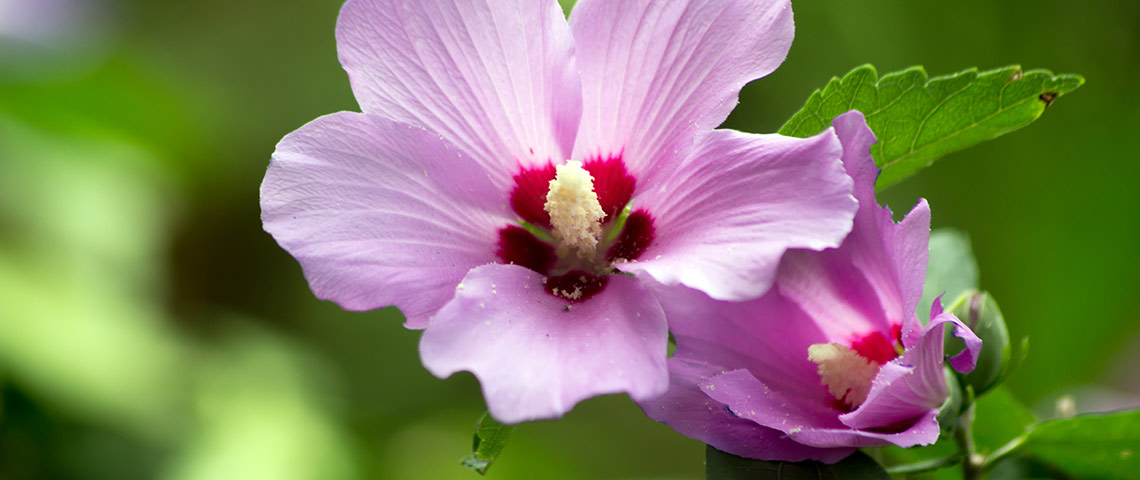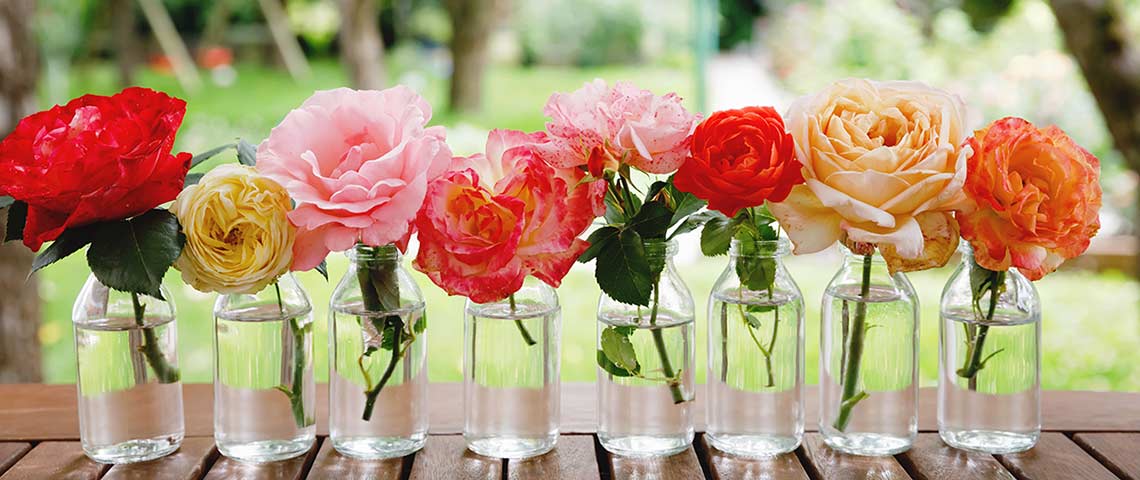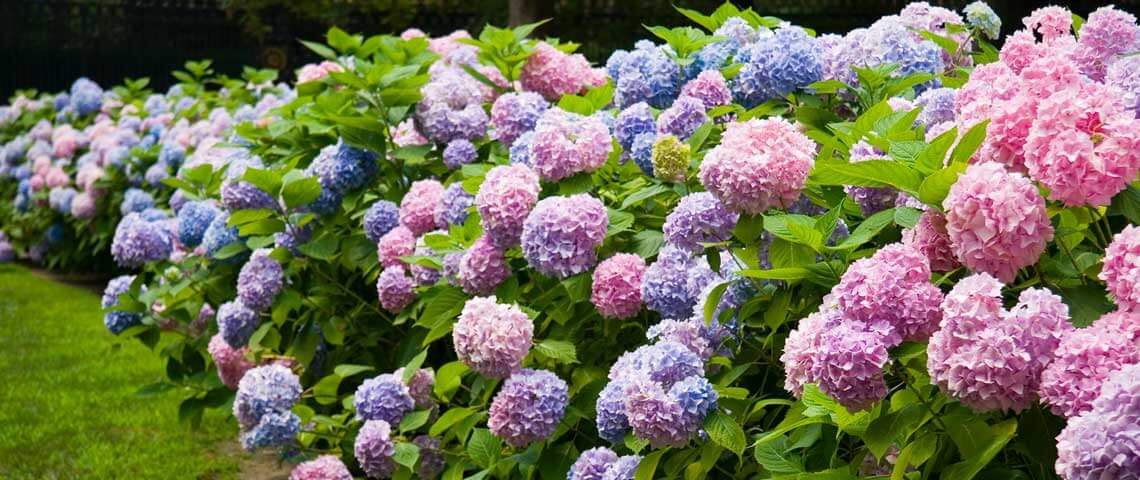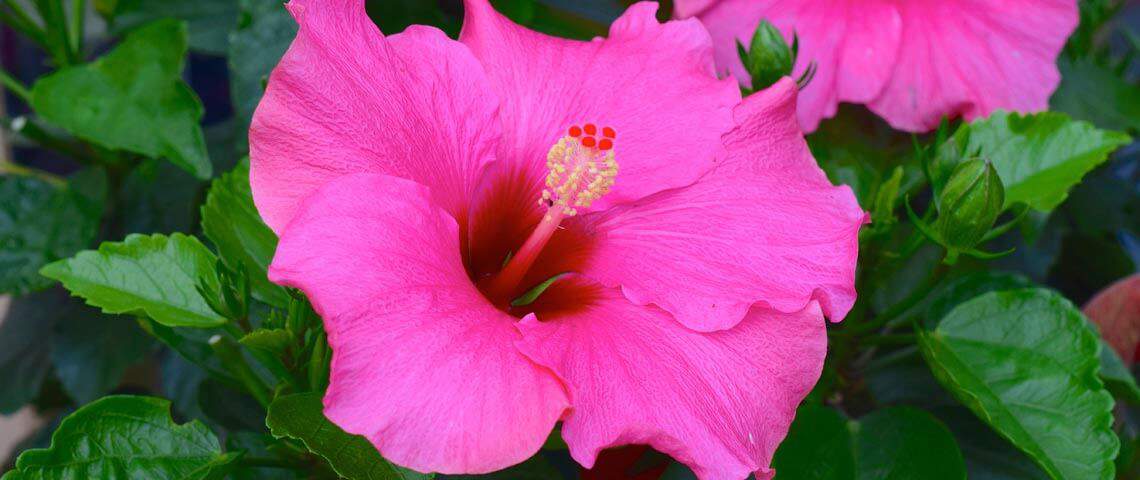How to Grow and Care for Rose of Sharon
When spring is in full swing, shrubs are blooming everywhere you turn. But very few flowering shrubs impress passersby at summer's peak. The Rose of Sharon bush, also known as hardy hibiscus or shrub althea, is a dazzling exception to that rule. This summer-flowering shrub will light up your landscape with colorful, striking blooms just when you need them most. By learning how to grow and care for a Rose of Sharon hibiscus, you can take your midsummer landscape to new heights.
- Understanding Rose of Sharon Basics
- Choosing the Best Rose of Sharon Varieties
- Planting and Transplanting Rose of Sharon
- Caring for Rose of Sharon Hibiscus
Understanding Rose of Sharon Basics
Known by the botanical name Hibiscus syriacus, Rose of Sharon shrubs are related to tropical hibiscus (Hibiscus rosa-sinensis). But unlike their frost-averse relatives, these cold-hardy Asian natives can take southern heat and still survive northern cold. Rose of Sharon shrubs thrive from U.S. Department of Agriculture plant hardiness zones 5 through 9, enduring winter temperatures as extreme as minus 20 degrees Fahrenheit.
In the past, Rose of Sharon shrubs fell out of favor in some regions because some types self-seeded and invaded areas where they didn't belong. But modern plant breeders responded and changed that, creating beautiful new varieties with few to no viable seeds.
Where self-seeding is a problem, you can now choose modern varieties with even showier blossoms because the plant's energy stays focused on flowers instead of seeds. If in doubt, check with your local extension office about Rose of Sharon shrubs for your area.

Rose of Sharon blooms from summer into fall.
Choosing the Best Rose of Sharon Varieties
Depending on when summer temperatures arrive in your region, Rose of Sharon shrubs may start blooming in early summer and continue well into fall. Their 2- to 3-inch flowers are smaller than tropical hibiscus, but more numerous. They come in frilly doubles and old-fashioned, single hollyhock-like blooms that hummingbirds love.
Selecting the best Rose of Sharon for your landscape starts with understanding the shrub's mature size. Many Rose of Sharon varieties grow 10 to 12 feet tall and nearly as wide, but some new dwarf varieties stay just 3 to 4 feet tall. These popular Rose of Sharon varieties illustrate the wide array of options:
- Azurri Blue Satin – Nearly seedless, this variety grows 12 feet tall and 6 feet wide with red-throated, true-blue blooms.
- Lil' Kim – Perfect for smaller landscapes, this dwarf variety stays 3 to 4 feet tall. Its striking white blooms have splashy burgundy throats.
- Sugar Tip – This seedless semi-dwarf grows 5 to 6 feet tall, with cream-edged blue-green leaves and light pink double flowers.
- Magenta Chiffon – Nearly seedless, this showy variety grows 12 feet tall and 10 feet wide, with deep magenta blooms reminiscent of English roses.
- Purple Pillar – Excellent for hedges and tight spaces, this narrow form grows 2 to 3 feet wide and up to 16 feet tall, with red-throated, purple-pink blooms.
For best results, choose a variety that will suit your available space when the shrub is fully mature. Your shrub will do well and need less maintenance, too.

Rose of Sharon flowers come in single and double forms.
Planting and Transplanting Rose of Sharon
For spectacular flowers and easy care, plant your Rose of Sharon in a spot with good drainage and full sun to partial shade. In northern climates, six or more hours of direct daily sun promotes maximum blooms. In southern zones, a spot with early morning sun and protection from intense afternoon rays keeps Rose of Sharon looking its best.
As with most shrubs, dig a planting hole slightly shallower than your plant's root ball and twice as wide. Remove the plant's container and place the plant so the top of the root ball will sit slightly higher than it was in the nursery pot when you're done.
Help transplant thrive by treating your Rose of Sharon with Pennington Plant Starter, mixed with water according to label instructions. Fill the hole with soil about halfway and water thoroughly with the mixture. Then finish filling soil in around your plant and water with your plant starter mixture again.
In southern regions, fall is an ideal time to plant your Rose of Sharon. Be sure to water the newly planted shrub consistently so it's well-hydrated when winter comes. In northern climates, spring planting allows your Rose of Sharon to become well-established long before next winter's cold temperatures arrive.
If possible, plant your shrub where you intend to keep it. But don't worry if you need to relocate it later on. Rose of Sharon roots grow relatively close to the surface and the shrubs transplant easily. Time your transplanting as you'd plan planting time.

Proper watering and fertilizing helps prevent bud drop.
Caring for Rose of Sharon Hibiscus
Once established, Rose of Sharon bushes require little maintenance. Follow these guidelines for proper care to keep them looking and flowering their best:
- Watering – Established Rose of Sharon shrubs tolerate drought, but spectacular flowers depend on adequate moisture. Water established shrubs as needed so they get about 1 inch of weekly water from irrigation and natural rainfall combined. Yellow leaves or dropped buds are typical signs of overwatering or underwatering, so watch your plant, check your soil and adjust accordingly.
- Fertilizing – Many flowering plants prefer plentiful phosphorus — that's the middle number in a fertilizer's N-P-K ratio — but Rose of Sharon and its hibiscus relatives favor potassium (the "K") instead. Pennington Rejuvenate Plant Food Citrus & Avocado 5-3-4 is specially formulated to provide hibiscus with an ideal blend of nutrients, including iron and magnesium, for beautiful flowers and healthy foliage. Feed your Rose of Sharon once in early spring. The product continues feeding for up to four months.
- Pruning – Rose of Sharon shrubs typically don't need pruning other than to remove an occasional dead or damaged branch. If you want to do some shaping, plan it for early spring just as new growth begins. Rose of Sharon blooms on new wood grown in the current season, so early pruning won't remove any flower buds.
- Protecting – Rose of Sharon shrubs are prone to insect and diseases, such as aphids and powdery mildew. Visible signs can be yellow leaves or deformed flowers. Sevin Sulfur Dust starts killing immediately upon contact and will not harm the plant. Apply a light dusting or spray frequently to keep your Rose of Sharon shrub healthy and free from insect and disease damage.
By learning how to grow and care for Rose of Sharon hardy hibiscus, you can enjoy abundant summer blooms with little care. At Pennington, we're here for you with premium specialty fertilizers and expert advice for all the plants you grow. So relax, get growing and get ready for Rose of Sharon's summer show.
Always read product labels thoroughly and follow the instructions carefully.
Pennington is a registered trademark of Pennington Seed, Inc.
GardenTech is a registered trademark of Gulfstream Home and Garden, Inc.
Sevin is a registered trademark of Tessenderlo Kerley, Inc.





